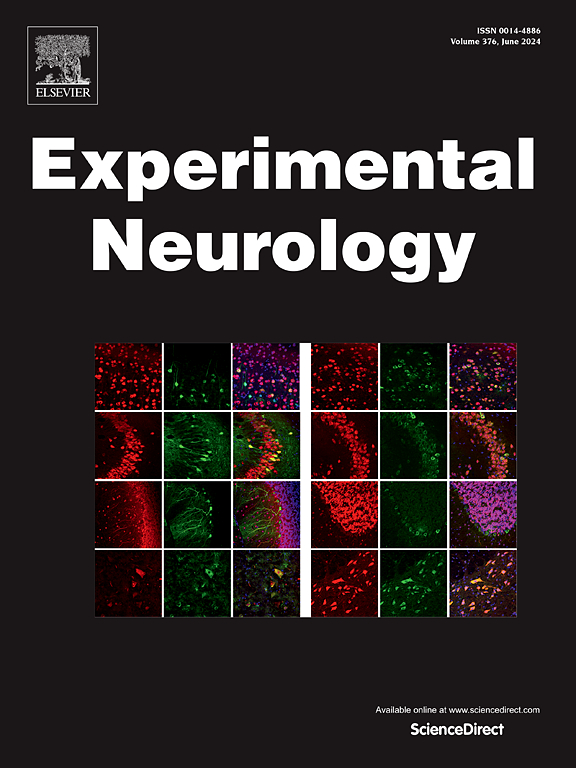Virus-mediated delivery of single-chain antibody targeting TDP-43 protects against neuropathology, cognitive impairment and motor deficit caused by chronic cerebral hypoperfusion
IF 4.6
2区 医学
Q1 NEUROSCIENCES
引用次数: 0
Abstract
Chronic cerebral hypoperfusion induced by permanent unilateral common carotid artery occlusion in mice was recently found to induce an age-dependent formation of insoluble cytoplasmic TDP-43 aggregates reminiscent of pathological changes found in human vascular dementia. In this model, the gradual deregulation of TDP-43 homeostasis in cortical neurons was associated with marked cognitive and motor deficits. To target the TDP-43-mediated toxicity in this model, we generated an adeno-associated virus vector encoding a single-chain antibody against TDP-43, called scFv-E6, designed for pan-neuronal transduction following intravenous administration. Injected prior to brain hypoperfusion, this tonic virus-mediated delivery of the scFv-E6 antibody reduced formation of cytoplasmic TDP-43 aggregates in cortical neurons, boosted levels of autophagy markers and attenuated microgliosis. Moreover, the novel object recognition and grip strength tests revealed that neuronal expression of scFv-E6 prevented the cognitive impairment and loss of motor performance caused by two-months of cerebral hypoperfusion. The robust protective effects of scFv-E6 antibody in this model suggest a key role of TDP-43 in neuronal damage and symptom phenotypes caused by chronic cerebral hypoperfusion. Accordingly, TDP-43 should be considered as a new therapeutic target in drug development, including antibody approaches, for treatment of vascular dementia.
病毒介导的靶向TDP-43的单链抗体可预防慢性脑灌注不足引起的神经病理、认知障碍和运动缺陷。
最近发现,小鼠永久性单侧颈总动脉闭塞引起的慢性脑灌注不足可诱导年龄依赖性的不溶性细胞质TDP-43聚集体形成,使人想起血管性痴呆的病理变化。在该模型中,皮层神经元中TDP-43稳态的逐渐失调与显著的认知和运动缺陷有关。为了在该模型中靶向TDP-43介导的毒性,我们生成了一种腺相关病毒载体,编码针对TDP-43的单链抗体,称为scFv-E6,设计用于静脉给药后的泛神经元转导。在脑灌注不足之前注射,这种强直性病毒介导的scFv-E6抗体递送减少了皮质神经元细胞质TDP-43聚集体的形成,提高了自噬标记物的水平,并减弱了小胶质细胞增生。此外,新的物体识别和握力测试显示,scFv-E6的神经元表达可以预防两个月脑灌注不足引起的认知障碍和运动能力丧失。scFv-E6抗体在该模型中的强大保护作用表明TDP-43在慢性脑灌注不足引起的神经元损伤和症状表型中起关键作用。因此,TDP-43应被视为治疗血管性痴呆的药物开发(包括抗体方法)中的一个新的治疗靶点。
本文章由计算机程序翻译,如有差异,请以英文原文为准。
求助全文
约1分钟内获得全文
求助全文
来源期刊

Experimental Neurology
医学-神经科学
CiteScore
10.10
自引率
3.80%
发文量
258
审稿时长
42 days
期刊介绍:
Experimental Neurology, a Journal of Neuroscience Research, publishes original research in neuroscience with a particular emphasis on novel findings in neural development, regeneration, plasticity and transplantation. The journal has focused on research concerning basic mechanisms underlying neurological disorders.
 求助内容:
求助内容: 应助结果提醒方式:
应助结果提醒方式:


